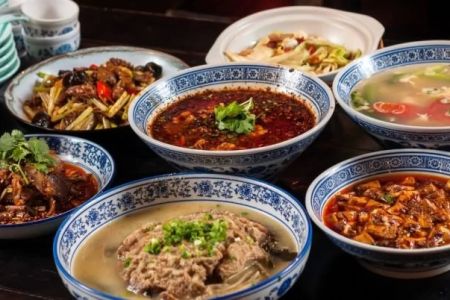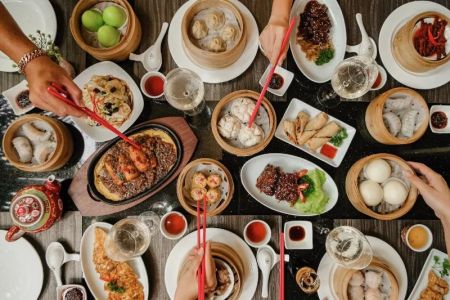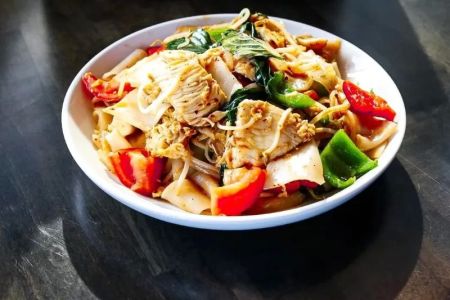- 1-Overview-of-Chinese-Food-Nutrition-Labeling-in-USA
- 2-Regulatory-Requirements-for-Nutrition-Labeling
- 3-Key-Nutrition-Components-on-Chinese-Food-Labels
- 4-Challenges-in-Accurate-Labeling-for-Chinese-Cuisine
- 5-Making-Healthy-Choices-Using-Nutrition-Labels
- 6-Real-Life-Example-How-Labeling-Impacts-Consumers
- 7-Where-to-Find-Reliable-Chinese-Food-Products-and-Information
1. Overview of Chinese Food Nutrition Labeling in USA
Chinese food nutrition labeling in the USA provides consumers with detailed information about the calorie content, macronutrients, vitamins, and minerals in Chinese cuisine products. Whether dining out or buying packaged Chinese food, nutrition labels help individuals understand what they are consuming and make informed decisions aligned with their dietary goals.
With Chinese cuisine growing increasingly popular across America, regulatory bodies have emphasized clear, standardized labeling to protect consumer health and enhance transparency. This overview sets the stage for understanding the specific requirements and practices surrounding Chinese food nutrition labeling in the United States.
2. Regulatory Requirements for Nutrition Labeling
In the USA, the Food and Drug Administration (FDA) oversees nutrition labeling standards, applying to packaged foods including many Chinese food products. The Nutrition Facts label must display serving size, calories, total fat, cholesterol, sodium, carbohydrates, protein, and certain vitamins and minerals.
Restaurants, including Chinese restaurants, are also subject to regulations requiring calorie disclosures on menus for chains with a significant number of locations. These regulations aim to provide consistent, accurate nutrition information to help consumers manage their intake.
Understanding these requirements ensures both producers and consumers can navigate the nutritional landscape of Chinese food responsibly.
3. Key Nutrition Components on Chinese Food Labels
Chinese food nutrition labels typically highlight calories, fats (including saturated and trans fats), sodium, carbohydrates, sugars, and protein. Sodium content is often notably high due to traditional soy sauce and seasoning use, making it a critical component for health-conscious consumers to monitor.
Additionally, information on allergens such as soy, wheat, and shellfish is essential due to common ingredients in Chinese dishes. These details empower consumers with allergies or dietary restrictions to make safer food choices.
Recognizing and interpreting these nutrition components enables better understanding of Chinese food’s health impact.
4. Challenges in Accurate Labeling for Chinese Cuisine
Accurately labeling Chinese food poses unique challenges due to recipe variations, portion sizes, and cooking methods. Traditional dishes may differ significantly from one restaurant or brand to another, complicating standardization of nutrition information.
Moreover, homemade or freshly prepared Chinese food often lacks formal labeling, requiring consumers to estimate nutritional values or rely on generic databases. This variability can create confusion or misjudgments about caloric intake and nutrient content.
Efforts by industry and regulatory agencies to improve labeling accuracy continue to evolve, supporting better consumer education and transparency.
5. Making Healthy Choices Using Nutrition Labels
Nutrition labels on Chinese food products serve as vital tools for making healthier dietary decisions. Consumers can compare products, control portion sizes, and avoid excessive sodium or unhealthy fats by reading labels carefully.
For example, opting for steamed dishes with lower sodium or sugar content rather than fried or heavily sauced options can significantly improve dietary balance. Understanding serving sizes prevents unintended overeating, especially in popular dishes like fried rice or chow mein.
Education on interpreting nutrition labels empowers consumers to enjoy Chinese cuisine while managing their nutritional goals effectively.
6. Real-Life Example: How Labeling Impacts Consumers
Jessica, a health-conscious diner in California, struggled to find nutritional information about her favorite Chinese takeout. After her local restaurant began posting calorie and sodium details on their menu, she adjusted her choices, switching from salt-heavy General Tso’s chicken to steamed vegetables and tofu stir-fry.
This change led to improved energy levels and better blood pressure control, demonstrating how accessible nutrition labeling directly benefits consumers’ health outcomes.
Stories like Jessica’s illustrate the tangible impact of clear and reliable Chinese food nutrition labeling in the USA.
7. Where to Find Reliable Chinese Food Products and Information
For those seeking authentic and well-labeled Chinese food products, Chinese Food offers a curated selection backed by transparent nutrition information and quality assurance. Their platform provides trusted sources for purchasing and learning more about Chinese cuisine’s nutritional aspects.
Accessing reliable information and products helps consumers maintain a balanced diet without sacrificing the rich flavors and cultural experience of Chinese food.
Explore more on Chinese Food to discover products and resources that align with your health and culinary interests.







